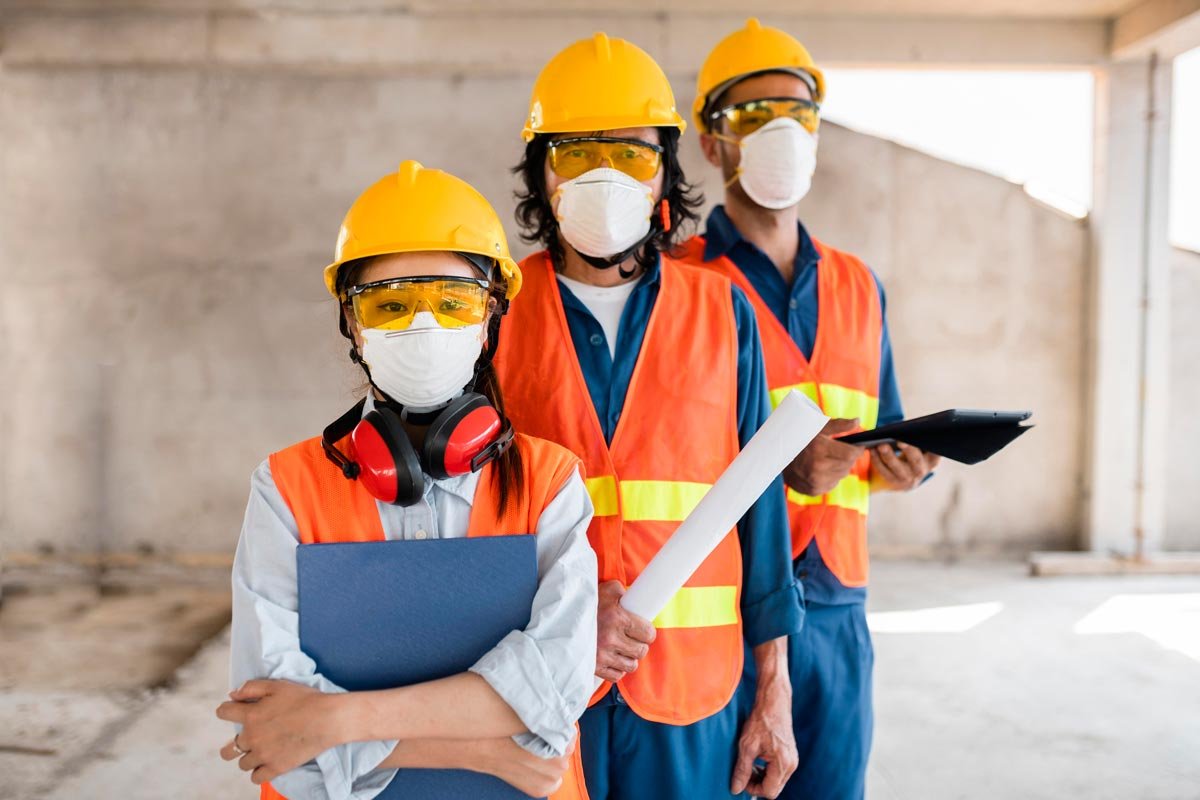Although not the most dangerous of occupations, the manufacturing sector is faced with a great number of health and safety risks that workers face each and every day. Knowing this, it is imperative that every manufacturing company, no matter how large or small, establishes a health and safety programme to be strictly adhered to. In fact, HSE has established guidelines for health and safety in manufacturing which must be observed and is a good starting place for an individual & company’s best practices in health and safety programmes. Let’s look at six of the key elements that form the foundation of health and safety within manufacturing.
1. Total Commitment of Management
To begin with, management must be totally committed to the health and safety of every employee within the company. It is actually their responsibility and duty to establish health and safety guidelines to be followed on their premises. That said, it can be a monumental task, so it is advisable to name a programme administrator to oversee establishing company guidelines and ensuring the resulting best practices are followed.
2. Employee Participation

No one knows their job better than the workers who are performing associated tasks. It is highly advisable to involve workers in the programme, getting their input on the dangers they have personally identified. Once you get your workers onboard with establishing best practices to keep them safe and healthy on the job, they may come up with some ideas that even HSE has overlooked! They are out there on the floor daily and are subject to any number of hazards, both large and small.
It has been suggested that you set up departmental teams. Bear in mind that not all workers will be exposed to the same risks. Some may need protection against chemical fumes while other departments might be dealing with tasks that commonly result in lower back strains because they lack the lifting equipment so necessary for those duties.
3. Identifying and Assessing Hazards
While your workers may not have immediate solutions, they have taken the first step in identifying and assessing safety and health hazards within the scope of the jobs they do. For example, a welder may know that they need an assortment of personal protection equipment such as safety helmets, goggles and vests. Unfortunately, they are not privy to the company accounts and are thus unable to discuss their concerns about inferior protection with the company’s PPE suppliers.
Just like anything else in manufacturing, there are grades in quality and if their PPE is not giving them adequate protection based on their assessment of risk, better protection is a must. In other words, adequate personal protection equipment is needed, but it’s not up to them to make a purchase order. This is where the programme overseer comes into play as the liaison between workers and upper-level management. These are the people with the wherewithal to purchase that which is necessary.
4. Safety Training

In order to ensure all health and safety guidelines are followed accurately, it may be necessary to offer health and safety training provided by third-party specialists. This is something HR can schedule once instructors are found. Here again, while the ‘rules’ are similar in scope, not all protection has been created equally. Something sufficient for one field within the manufacturing sector may not be effective in other fields.
You cannot expect a worker to be told to do something they’ve never been taught to do. Safety teams providing the training have met HSE requirements and are certified to offer safety training in the workplace. Only choose certified safety trainers so that you can be assured your workers are getting the training they require to stay safe and healthy on the job.
5. Produce a Health and Safety Programme Manual
Another vital piece in your health and safety best practices programme is to produce a company manual that must be read by every single employee. Once they have read and studied the booklet, they should be tested. Also, it is imperative that you have them sign the book for a few reasons.
While workers want to be safe on the job, some are a bit lax when it comes to things like reading and studying a best practices manual. If you require them to sign the book attesting to it that they have actually read and studied it, some of your company risks may be alleviated to some extent. After all, you provided the training but they failed to adhere to the guidelines that have been established. You obviously want them to be safe on the job, but you also don’t want a legal battle on your hands if they are injured after being trained in proper procedures.
6. Ongoing Evaluation of Your Company Safety Programme
One of the tasks your programme administrator should take on is a periodic review of your health and safety best practices guidelines. Many manufacturing concerns continue to identify risks that weren’t immediately recognised during the initial formulation of those guidelines. Perhaps your administrator can name a team to be continually in contact with members of their departments. One from each area on the floor would be quite helpful.
These would report back to you and if serious concerns are identified, it’s time to begin analysing what the exact problem is and the extent to which workers are at risk. This is often the case with the rapid development of technology and so it is suggested that you schedule reviews at different intervals of your choosing. Maybe the risk management team could meet monthly while a company-wide meeting could be scheduled quarterly or twice yearly.
Bear in mind that the health and safety of your employees is not only your moral concern, but it is the law. For every safety violation you are charged with upon inspection, you could be slapped with a hefty fine or other penalties. Begin with HSE guidelines and then go about creating best practices in health and safety for your particular company. These key elements should set you on the road to success.


